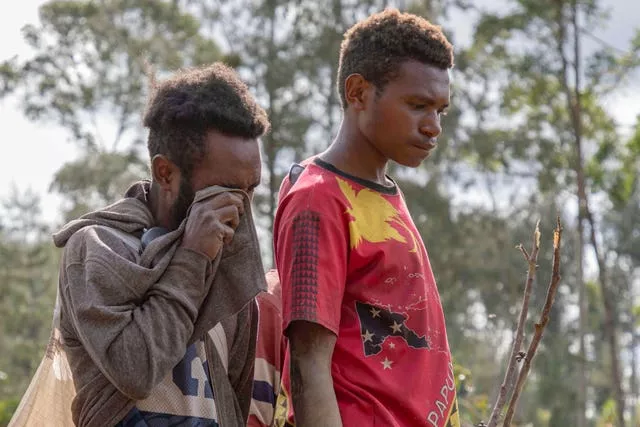Authorities fear a second landslide and a disease outbreak are looming at Papua New Guinea’s mass-casualty disaster, a United Nations official said.
A mass of boulders, earth and splintered trees devastated the village of Yambali in the remote highlands of the South Pacific nation when a limestone mountainside sheared away on Friday.
Serhan Aktoprak, chief of the International Organisation for Migration’s mission in Papua New Guinea, said the debris has become more unstable due to rain and streams between the ground and rubble.
The UN agency has officials at the scene in the province of Enga, helping to shelter 1,600 displaced people.

The agency estimates 670 villagers died in the landslide, while Papua New Guinea’s government has told the UN it thinks more than 2,000 people were buried. Six bodies had been retrieved from the rubble by Tuesday, a UN statement said.
“We are hearing suggestions that another landslide can happen, and maybe 8,000 people need to be evacuated,” said Mr Aktoprak.
“This is a major concern. The movement of the land and the debris are causing a serious risk and, overall, the total number of people that may be affected might be 6,000 or more.”
That includes villagers whose source of clean drinking water has been buried and subsistence farmers who lost their vegetable gardens.
“If this debris mass is not stopped, if it continues moving, it can gain speed and further wipe out other communities and villages further down,” Mr Aktoprak said.
A UN statement later tallied the affected population at 7,849, including people who might need to be evacuated or relocated. The UN said 42% of those were younger than 16.
On Tuesday, Enga provincial disaster committee chairperson and provincial administrator Sandis Tsaka told Radio New Zealand some villagers have already been evacuated from the area.

The number of evacuees was unclear, but he said that as many people as possible would be evacuated on Wednesday as experts fear recent weather may cause the mountainside to become unstable again.
Relocating survivors to safer ground has been a priority for days and evacuation centres have been established on either side of the debris heap, up to eight metres high and sprawling over an area the UN says is equivalent to three or four football fields.
Scenes of villagers digging with their hands through muddy debris in search of their relatives’ remains were also concerning.
“My biggest fear at the moment is corpses are decaying… water is flowing, and this is going to pose serious health risks concerning contagious diseases,” Mr Aktoprak said.
On Tuesday, an Australian disaster response team arrived in Papua New Guinea, including a geohazard assessment team and drones to help map the site.

“Their role will be particularly helping perform geotechnical surveillance to establish the level of the landslip, the instability of the land there, obviously doing some work around identifying where bodies are,” said Murray Watt, Australia’s minister for emergency management.
The Australian government has offered long-term logistical support for clearing debris, recovering bodies, and supporting displaced people. It has also announced an initial aid package.
Earth-moving equipment used by Papua New Guinea’s military was expected to arrive soon after travelling from the city of Lae, 250 miles to the east, said Justine McMahon, country director of the humanitarian agency CARE International.
The landslide buried a 650-foot stretch of the province’s main highway. But the road had been cleared from Yambali to the provincial capital, Wabag, through to Lae, officials said on Tuesday.
“One of the complicating factors was the destruction of parts of the road plus the instability of the ground, but they have some confidence that they can take in heavy equipment today,” Ms McMahon said.
An excavator donated by a local builder on Sunday became the first piece of heavy earth-moving machinery to help villagers digging with shovels and farming tools to find bodies.

Australian deputy prime minister Richard Marles said an Australian air force C-17 Globemaster, a four-engine transport jet capable of carrying 77 tons of cargo, was bringing supplies from Australia to Papua New Guinea’s capital, Port Moresby.
Two smaller Australian air force turboprop transport planes were already at Port Moresby, 370 miles south-east of the devastated village.
“There is more that we are seeking to do, but to be frank, part of the issue here is about not overwhelming a system which is currently under a lot of stress,” Mr Marles told parliament.
The smaller C-130 Hercules and C-27J Spartan transport planes are to fly supplies from the capital to Mount Hagen, the capital of Western Highlands province, from where the cargo would travel by road to neighbouring Enga province.
Officials said that that plan took a blow with news that a bridge between Mount Hagen and Wabag collapsed on Tuesday. The cause of the collapse was not explained, but it was unrelated to the landslide.
The migrant agency said a detour would add two or three hours to the journey. Urgent efforts were underway to repair the bridge.







